Farmers’ Market Salad with Apricot-Cumin Dressing
It’s that time of the year when the weather is getting warmer and I start craving raw and cold salads again. This week, at the farmers’ market, I brought home lots of kohlrabi and turnips with the main intention to eat them raw (which is how I like them better anyway).
I know that a lot of people aren’t particularly excited about turnips, and even though I used to share the same opinion, I’ve been rediscovering this vegetable and absolutely loving its versatility. I’ve been enjoying thinly sliced turnips with just a dash of salt and black pepper as a light snack these days – there’s something about its light and yet slightly bitter flavour that I really love.
Anyway, this salad is pretty much like a coleslaw, with lots of crispiness and different textures. I felt I needed to balance that with a smooth dressing, and that’s how I ended up making an apricot-based one. I was really pleased with how it turned out – it’s sweet and tangy at the same time, with just a hint of cumin to make it more complex and intense.
Farmers’ Market Salad with Apricot-Cumin Dressing
Serves 4
For the salad:
220 g /5 medium sized carrots, grated
140 g /1 large kohlrabi, thinly sliced
120 g /1 large turnip, thinly sliced
200 g /1 large orange, sliced into half-moons
15 g / half a bunch of parsley, finely chopped
15 g / half a bunch of coriander, finely chopped
60 g /1/2 cup pistachios, coarsely chopped, toasted and lightly salted
For the apricot-cumin dressing:
65 g /6 dried unsulphured apricots, roughly chopped
6 Tablespoons olive oil
6 Tablespoons lemon juice
3 Tablespoons water
1 ¼ teaspoons cumin seeds, toasted and ground in a mortar and pestle
¼ teaspoon sea salt
black pepper to taste
Combine all the ingredients for the salad in a large bowl.
Put the apricots in a small bowl. Pour 1 cup of boiling water over them, cover the bowl, and let stand for at least 10 minutes, or until the apricots are very soft.
In a blender, combine the drained apricots with all the other ingredients for the dressing. Blend until you get a very smooth mixture.
Pour the dressing over the salad (you might not need all of it, use just enough to coat the vegetables), mix with a wooden spoon or with your hands and serve immediately.
Roasted Carrot Soup with Garlic and Dukkah
I’m in a soup kick at the moment. Last week it was the butternut squash soup, the week before that the turnip-kale one and, finally, this week, the roasted carrot and garlic soup. Warm and smooth soup is hard to beat around this time of the year, particularly when you live in a part of the world that has been unlucky (and, apparently, will continue to be) with the weather for a couple of weeks now.
This soup in particular requires minimal effort to make and you probably already have all the ingredients in your pantry. All you have to do is to chop a few carrots (if using organic, like I did, you don’t even need to peel them), roast them until sweet and dark around the edges and blend them with a few cups of stock and water to make a perfect, velvety cream.
The dukkah is equally easy and straight-forward to make, adding texture and an extra layer of flavour to the soup. The recipe bellow makes way more than what you’ll actually need for this particular dish, so feel free to use it in other preparations as well. A few tried and tested ideas: as a crust to pan-fried tofu or tempeh, on top of a kale and avocado salad and blended into a roasted tomato sauce. I’m sure you can come up with more ideas on how to use it though; the possibilities are endless. Enjoy the soup and I’ll be coming back next week with another recipe for cold weather weeknight meals. 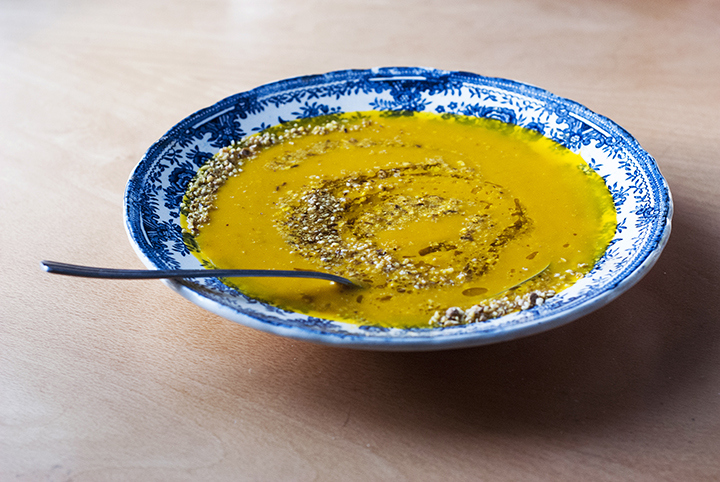
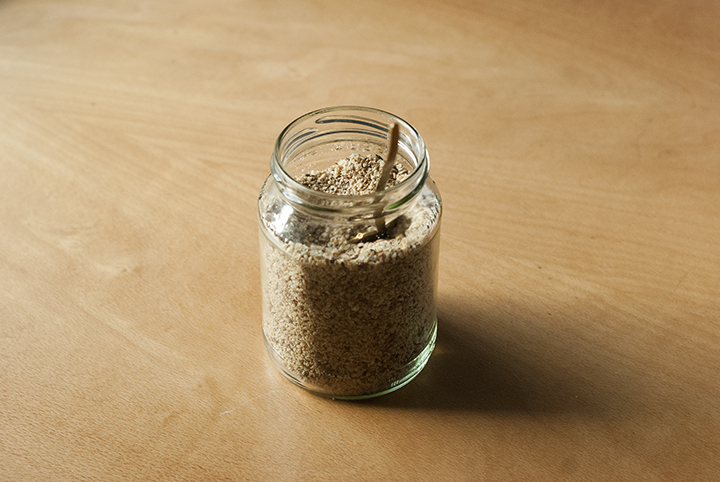
Roasted Carrot Soup with Garlic and Dukkah
(serves 4 to 6)
900 g / 11 medium sized carrots, coarsely chopped
1 Tablespoon olive oil
¾ teaspoon salt
½ teaspoon cinnamon
45 g / 1 garlic head
625 ml / 2 1/2 cups water
625 ml / 2 ½ cups low sodium vegetable stock
For the dukkah:
48 g /1/3 cup hazelnuts
80 g / ½ cup sesame seeds
2 Tablespoons coriander seeds
1 Tablespoon cumin seeds
½ teaspoon salt
wedges of lemon juice, to serve
Pre heat the oven to 180 C. Line a large baking tray with parchment paper. Add the carrots, oil, salt and cinnamon to it.
Grab a piece of aluminium foil (15 by 15 centimetres is more than enough) and add a drizzle of olive oil over it. Place the garlic head, cut side down, over the foil and add a pinch or two of salt. Wrap the foil around the garlic head and put it in the oven, along with the carrots. Roast the vegetables for 45-60 minutes, or until the carrots are tender and golden brown.
In a pot over medium-high heat, heat the stock and the water until boiling point. Once boiling, decrease the heat to low and let it simmer until needed.
Add the carrots to the bowl of a high speed blender. Squeeze the roasted garlic cloves out of their skins and add them to the bowl as well. Add the water and stock and process until smooth (you might have to do this in batches, as a regular blender doesn’t hold such amount of food and liquid all at once). Have a taste and adjust the seasoning if needed.
In the meantime, put a large skillet over medium heat and, once hot, add the hazelnuts and toast them for 2 to 3 minutes or until golden brown. Place the hazelnuts into a clean kitchen towel and rub the towel to peel off their skins. Add the sesame, coriander and cumin seeds to the same skillet and toast until the spices smell fragrant and the sesame seeds have darkened just a bit.
Add the toasted nuts, seeds and salt to the bowl of a food processor and process until you have a sand-like mixture. Serve the dukkah over the soup along with a squeeze of lemon juice. The dukkah will keep, stored in a jar, for a couple of weeks.
Carrot and Tahini Muffins
Some of my culinary experiments don’t turn out as well as I thought they would, either by lacking flavour and/or photographic charisma. Lately, there were at least three dishes I conceptualized, took notes of and photographed, but ended up not posting up here because, well, they weren’t good enough. A weird tasting celeriac and roasted garlic soup, a watery korma, some herb crusted tempeh that turned out too dry after being baked… I’m well familiar with failure and I’m not defeated by it, as I try to evaluate what went wrong, what could have I done better, and so on – the worst part is, I guess, to actually eat those not so well succeeded attempts.
So, when things go wrong, I turn to what I know it’s good – and I’m here talking about these carrot and tahini muffins. I have a (healthy) obsession with tahini. I just love it. I always keep a jar of it in the fridge and another one in the pantry. I have the nasty habit of opening up the tahini jar, take a teaspoon of it, top it up with a few drops of agave nectar, and in it goes. These muffins are dense and nutty in flavour, punctuated by shreds of carrot and toasted sesame seeds. They’re the perfect accompaniment for a cup of tea in the mid-afternoon when, sometimes, that sugar cravings just start to pike up.
Carrot and Tahini Muffins
(for 8 muffins)
Dry mix:
1 cup / 140 g buckwheat flour
1 cup / 120 g brown rice flour
½ teaspoon baking powder
¼ teaspoon baking soda
¼ teaspoon salt
½ teaspoon cinnamon
4 tablespoons toasted sesame seeds
wet mix:
1 tablespoon flax seed meal mixed with 5 tablespoons water
1 cup / 250 ml unsweetened nut milk (I used almond milk)
½ cup / 135 g dark tahini
¾ cup / 185 ml agave nectar
1 cup / 108 g shredded carrots (about 1 large carrot)
melted coconut oil or sunflower oil to grease the muffin tins
1. Pre-heat the oven to 175º/350ºF. Grease with sunflower oil or melted coconut oil 8 muffin tins.
2. In a large bowl, sift the flours, baking powder, baking soda, salt and cinnamon. Add the sesame seeds and stir well to combine.
3. In another bowl, whisk together the flax seed mixture, nut milk, tahini and agave nectar, until well incorporated.
4. Add the wet mixture to the dry ingredients stirring well to combine. Finally, add the grated carrots.
5. Pour the mixture into the greased muffin tins. Bake in the oven for 20 to 25 minutes (mine took exactly 23 minutes). Let the muffins cool a bit in the tins before unmolding and transferring them to a cooling rack. Eat!
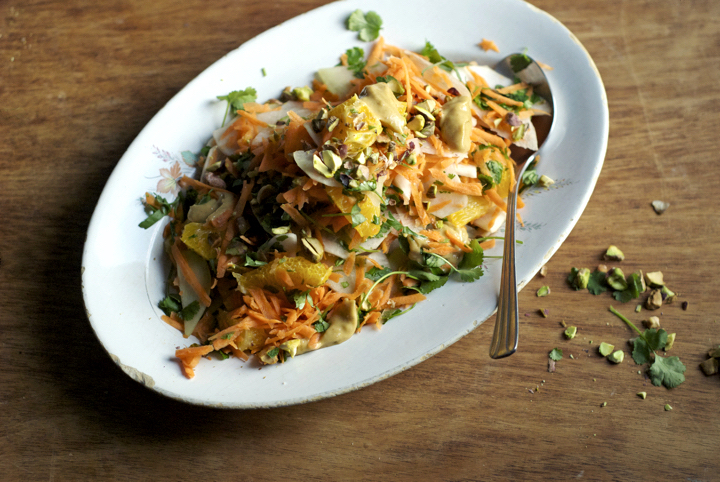
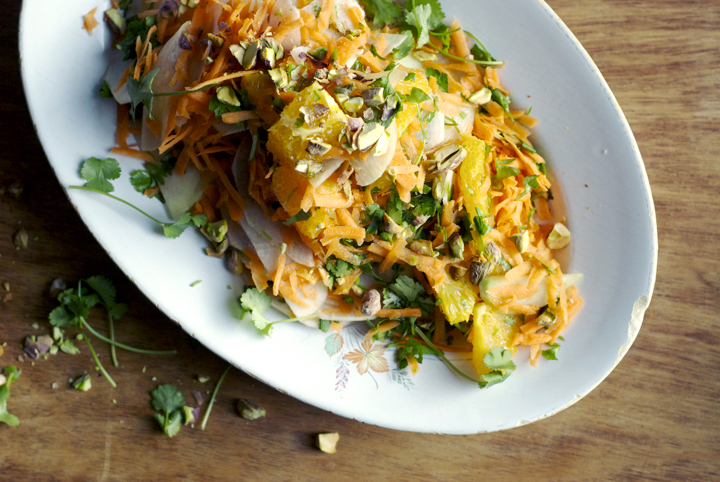
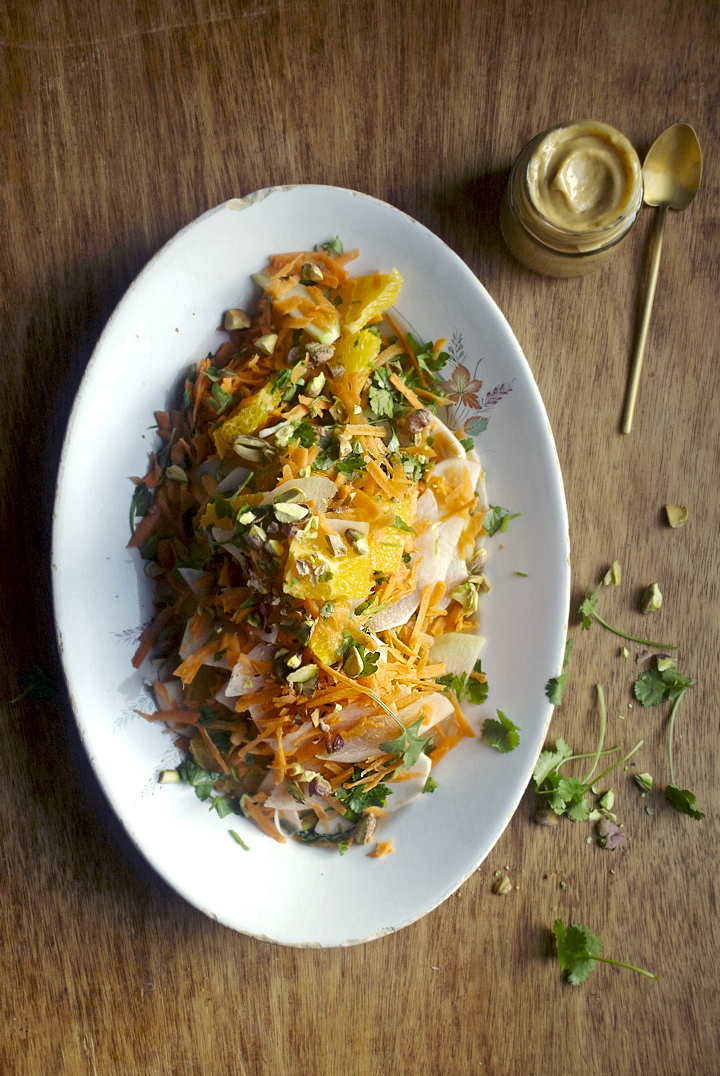
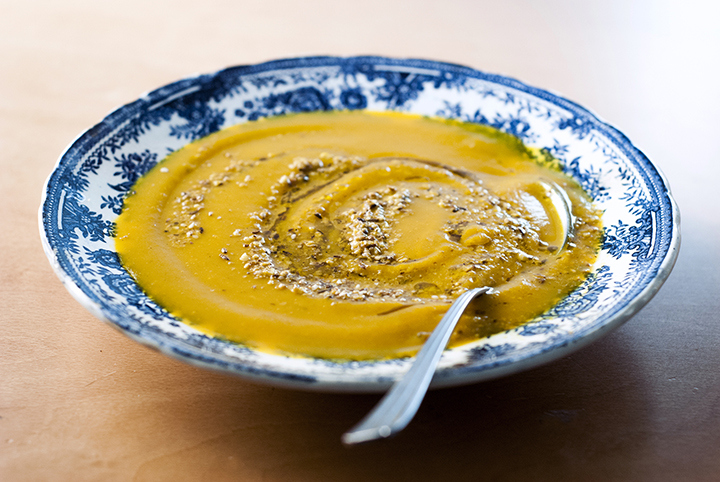
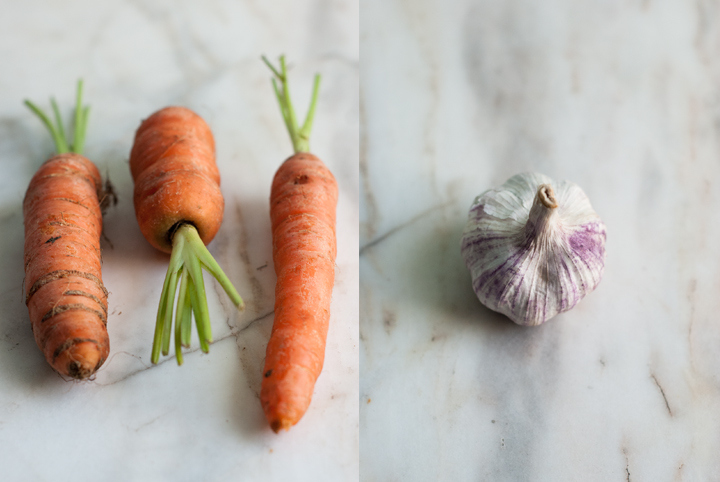
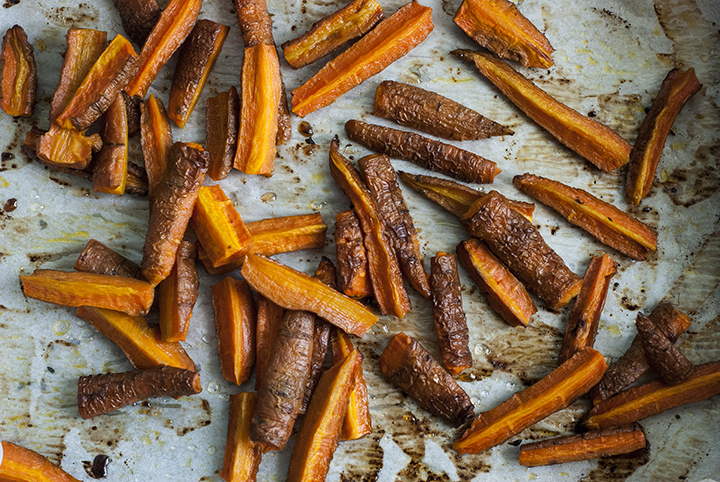
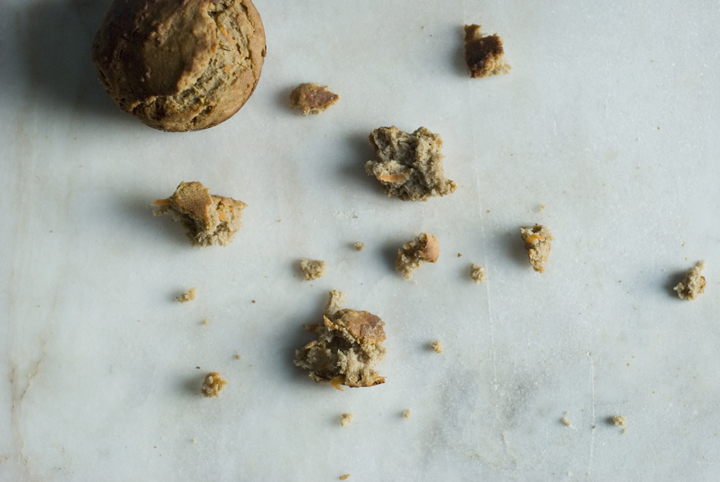
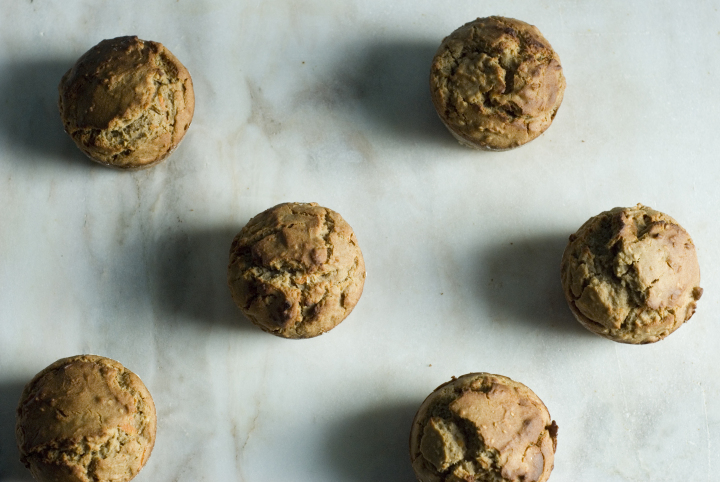
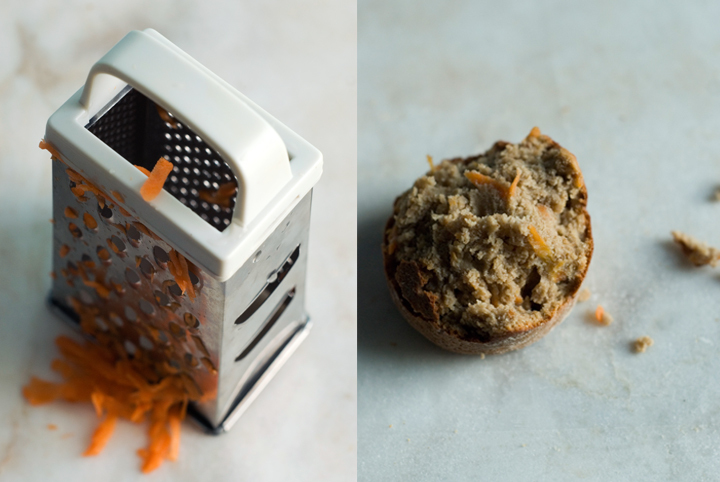
4 comments